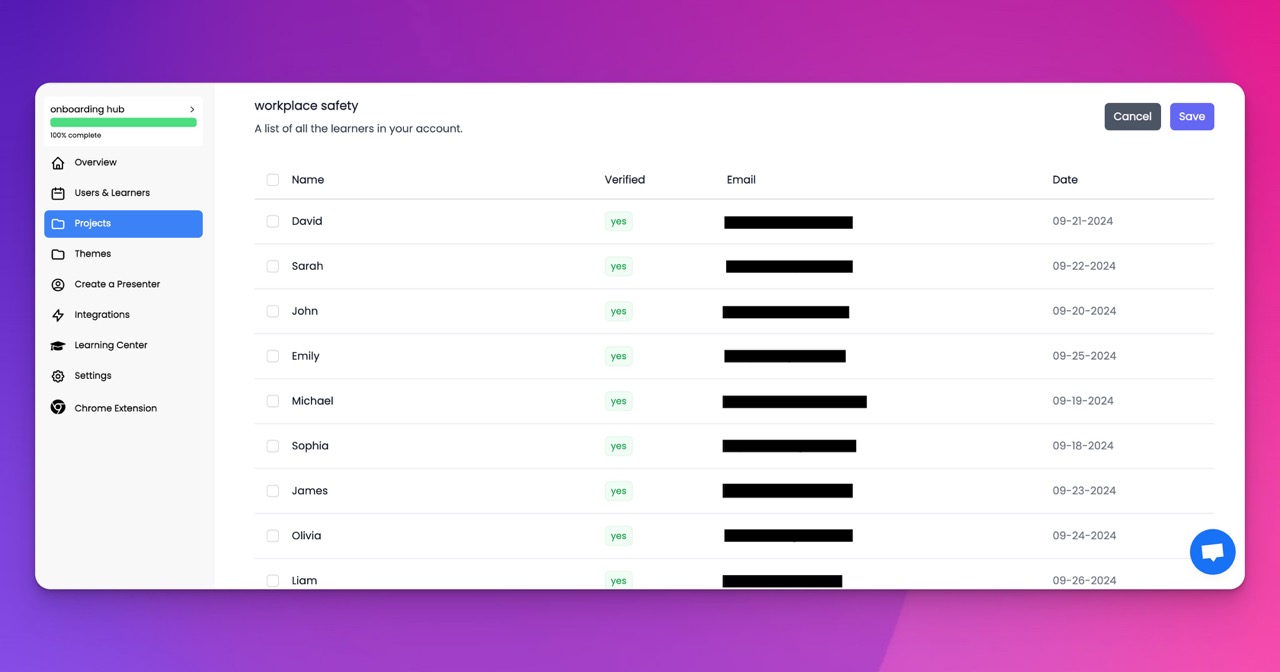🎉 Trainday now integrates with Zendesk and Hubspot 🎉 Trainday now integrates with Zendesk and Hubspot 🎉 Trainday now integrates with Zendesk and Hubspot
🎉 Trainday now integrates with Zendesk and Hubspot
🎉 Trainday now integrates with Zendesk and Hubspot
Contact
Banking
Advanced Training Programs for Employees in Banking
Revolutionizing Employee Training in Banking: Harnessing Data and Artificial Intelligence
In today's rapidly evolving banking industry, staying ahead of the curve is crucial for both financial institutions and their employees. As technology continues to reshape the financial landscape, advanced training programs are essential for equipping banking professionals with the necessary skills to thrive in this dynamic environment. This blog post will explore the revolutionary potential of using data and artificial intelligence (AI) to develop relevant employee training courses efficiently and effectively.
1. The Power of Data in Identifying Training Needs:
Data is the backbone of any successful training program. By leveraging the wealth of information available within an organization, such as employee performance metrics, customer feedback, and industry trends, banks can gain valuable insights into the specific areas where their employees require further training. Analyzing this data allows financial institutions to identify skill gaps, knowledge deficiencies, and emerging trends, ensuring that training programs are tailored to address these needs.
2. Utilizing AI for Efficient Course Development:
Traditional training programs can be time-consuming and resource-intensive, often failing to keep pace with the rapidly evolving banking industry. AI offers a transformative solution by automating the course development process, significantly reducing time and effort. AI algorithms can analyze vast amounts of data and curate relevant content, enabling the creation of training courses that are up to date and aligned with industry best practices. This ensures that employees receive the most current and applicable information in a fast and efficient manner.
3. Personalized Learning Paths:
One size does not fit all when it comes to employee training. Recognizing this, AI can be employed to create personalized learning paths based on individual employee profiles. By analyzing employee performance data, AI algorithms can identify specific areas of improvement for each employee. This enables the creation of customized training programs that focus on addressing individual skill gaps, optimizing learning outcomes, and fostering professional growth.
4. Real-Time Feedback and Assessment:
Data and AI can enhance the training experience by providing real-time feedback and assessment. Advanced analytics tools can track employee progress, identify areas of improvement, and provide immediate feedback, allowing employees to monitor their own growth and make necessary adjustments. Additionally, AI-powered simulations and virtual reality environments can create realistic scenarios for employees to practice their skills and receive feedback, cultivating a more immersive and effective learning experience.
5. Continuous Learning and Adaptability:
The banking industry is in a constant state of flux, with new technologies and regulations emerging regularly. To keep pace with these changes, employee training must be ongoing and adaptable. Leveraging data and AI, banks can create a culture of continuous learning, where training programs are regularly updated and refined based on real-time insights. This ensures that employees remain informed and equipped to tackle new challenges and opportunities as they arise.
Conclusion:
As the banking industry becomes increasingly reliant on technology and data-driven decision-making, employee training programs must evolve to meet these demands. By harnessing the power of data and AI, banks can develop advanced training programs that are relevant, efficient, and effective. The adoption of data-driven training approaches ensures that employees are equipped with the necessary skills and knowledge to adapt to the fast-paced changes in the industry, enabling banks to thrive in an increasingly competitive landscape.
Accelerate Compliance.
Deliver OSHA-Ready Courses Instantly.
Empower your team with data-driven training solutions tailored to your industry's safety standards. Stay compliant, reduce risks, and boost productivity with AI-powered course creation.
